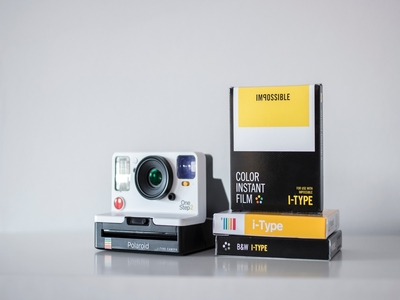The resurgence of Polaroids is due to the quick prints of any photograph you take and the vintage aesthetic.
The most recent versions even allow you to save the photographs to a memory card.
However, a Polaroid camera, especially an old one, may end up breaking or jamming.
We’ll go over how to fix a Polaroid camera in this guide!
Why Your Polaroid isn’t Working and How to Fix It

Dead or Dying Batteries
The most typical reason why a Polaroid camera fails is because of dead or dying batteries.
Fresh batteries can usually shoot up to 100 images, so keeping track of your photos can help you avoid a dead camera, especially when you need it the most.
If the lights on the adjustment dial start to flash simultaneously, or a red light beside the viewfinder begins to glow, it’s time to buy new batteries.
You can just follow the manufacturer’s instructions to change the battery, but battery replacement will vary depending on the Polaroid model.
Accumulated Dirt
Dirt and other things may get trapped in the film ejection slot while photographing outside frequently, which can cause issues when putting the film in the camera.
So, a Polaroid camera, like any other film camera, must be cleaned regularly.
Always have a dependable cleaning kit on hand to keep your Polaroid camera in excellent working order.
A blower brush and cleaning cloth work best for keeping your camera clean.
Damaged Film or Loaded Incorrectly

A film that has been exposed to too much heat, humidity, or cold could be damaged and cause problems with your Polaroid camera.
You should also make sure you load the film correctly according to the instructions provided.
In addition, avoid pressing the rectangular holes located near the back and exposing them to direct sunlight.
Also, make sure you’ve used all ten frames before removing the back of your camera. If not, this will expose any remaining pictures and render them useless.
Once you’ve made sure all of the frames were used, slide the fresh pack straight to the rear when loading it and ensure that the yellow lines on the film are parallel with those in the camera.
Your Polaroid camera will require some TLC from time to time.
This will guarantee that your camera continues to produce the greatest photographs possible and extend its lifespan.
Read our related article on How to Use a Polaroid Camera. This guide is great for beginners!
Cleaning Your Camera

When working with the plastic or metal parts of the camera, only a slightly dampened cloth should be used.
It’s not necessary to use chemicals to clean your camera.
In fact, because chemical cleansers might harm your camera, they should not be used.
If cleaning the leather elements, take great care while doing so because you do not want to damage the leather.
Always utilize a microfiber cloth designed for the lens. It’s best to use a cleaning cloth that is designed for the lens of your camera.
This will prevent you from scratching the lens and leaving any strands behind that may degrade the quality of your pictures.
Watch this video on how to clean your Polaroid:
Read our related article on How to Put Film in a Polaroid Camera the right way!
Conclusion
Polaroid cameras are a great way to immortalize everyday events.
However, knowing how to fix a Polaroid camera could be helpful if you have an issue with your camera.
A few tactics include keeping your camera in a dark, cool place and avoiding extreme heat.
These methods will keep your camera operating for longer, allowing you to take more photographs and save memories.